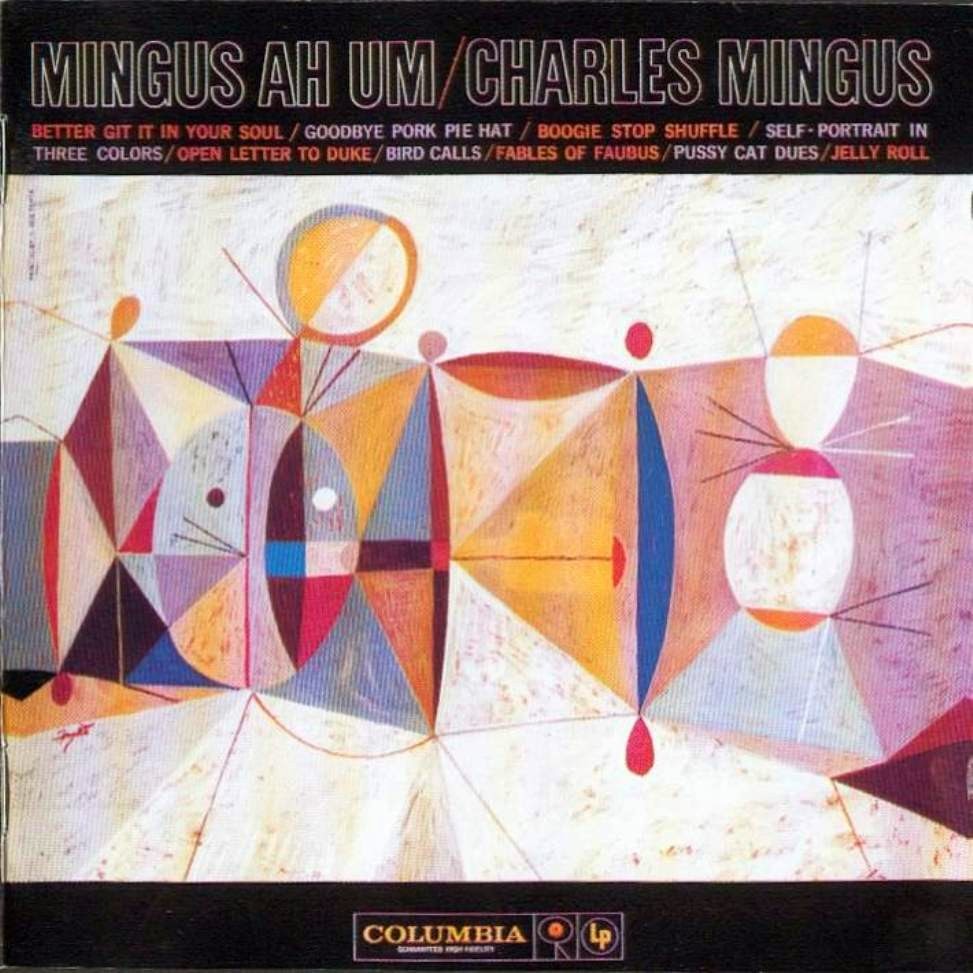And now for something completely different. I’m certainly not a jazz man. Actually, as
has probably become clear, I’m a lyrics man more than anything. I mainly listen
to music for the sake of the singing voice, and not just singing for the sake
of singing, but singing words that carry some meaning for me, or that at least
blend with music in a striking way.
But I’m always willing to make exceptions. Classical music,
first, and then, much later, instrumental jazz. Though I first heard of Charles
Mingus (today’s birthday boy—1922-1979) at the end of his life when Joni
Mitchell collaborated with him on an album called Mingus (1979), I didn’t seek out the man’s recordings. In fact, I
didn’t get around to the famed double bass player and band leader’s music until
2009, the LP's 50th anniversary. At that point, somewhere on the other side of limbo, so to speak, I guess
I was looking for something different, or maybe just trying to get a bit more
education, having turned 50 myself.
I remember asking Scott Saul, when he was a grad student, to
recommend to me some of the best Jazz albums, since I was curious who he would
pick and wondered if I would have heard of the names he gave. Mingus Ah Um (1959) was one of the first
titles he said. When I finally got around to it I was in a kind of slump due to
some really bad back pain—which lasted from the end of August till almost
Christmas of 2009. Today’s choice, the opening track of that album, was one of
my favorite things to hear then, for some reason.
Trying to figure out the reason isn’t so easy. I will say
that, because it was the lead track, it announced the album in a way that
always brought pleasure. I would put five discs in a CD changer so as not to
have to hobble over to change CDs (this was before I revitalized the vinyl
collection), and “Better Git It In Your Soul” was a shot of good vibes every
time that disc came around.
It’s in that opening little flurry on the bass. It’s the kind of thing worth isolating as a
ringtone, y’know? It calls to me, and
then, for the first minute of this seven-minute track, I’m completely hooked,
which is to say that that first minute acts as much as a hook as the hook of
any pop track. There’s that riff that the horns play that becomes, to my mind
anyway, the dominant “tune.” It returns late
in the number, and both times there’s a little hint of—to my ears—Dixieland.
Which I guess is because of the trombone.
And the shouting voice in the background, which comes in at various
times, keeping time as well, makes the whole thing feel like some kind of
downhome gospel jam.
It works into your soul alright. The second minute is mainly
the sax taking over, but with great syncopation with the piano which then
starts to come forward and strut, leading into the third minute, and around
midway through the sax kind of solos, with percussion along, with a sound that
feels like it’s out on Lonely Street, just bopping to the heavens. There are drum
solos later in the track (the last one returns us to the “Dixie” part with the
voice shouting “alleluia”) that make us aware that, all along, the rhythm of
this thing has been very loose and goosey. I suppose that’s the overall feeling
I get from it—it loosens things up in a way that feels like a break in the
clouds.
As a composition it all hangs together with a strong
sequential thrust, as though it has “movements.” That opening, one of my favorite minutes of
instrumental music, leads you in with such flair that you’re primed for just
about anything. Dixie? Gospel? Bop? Even a sax blues is not out of place. There’s
the sense that it could go in a lot of directions, and in fact I’d be
hard-pressed to say where it actually goes, except back to that hook for the
finish. Alleluia.




No comments:
Post a Comment